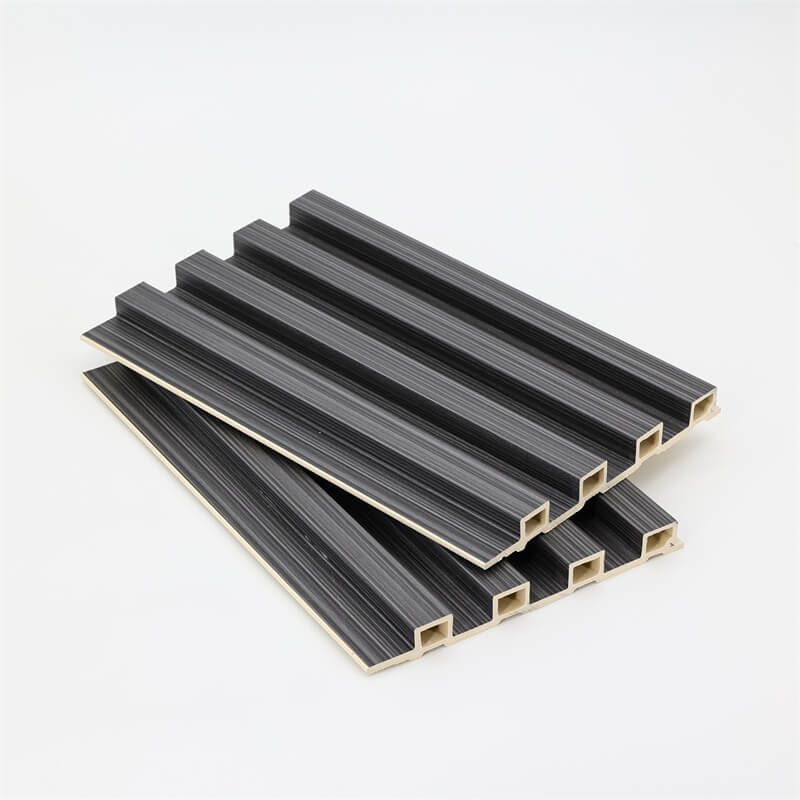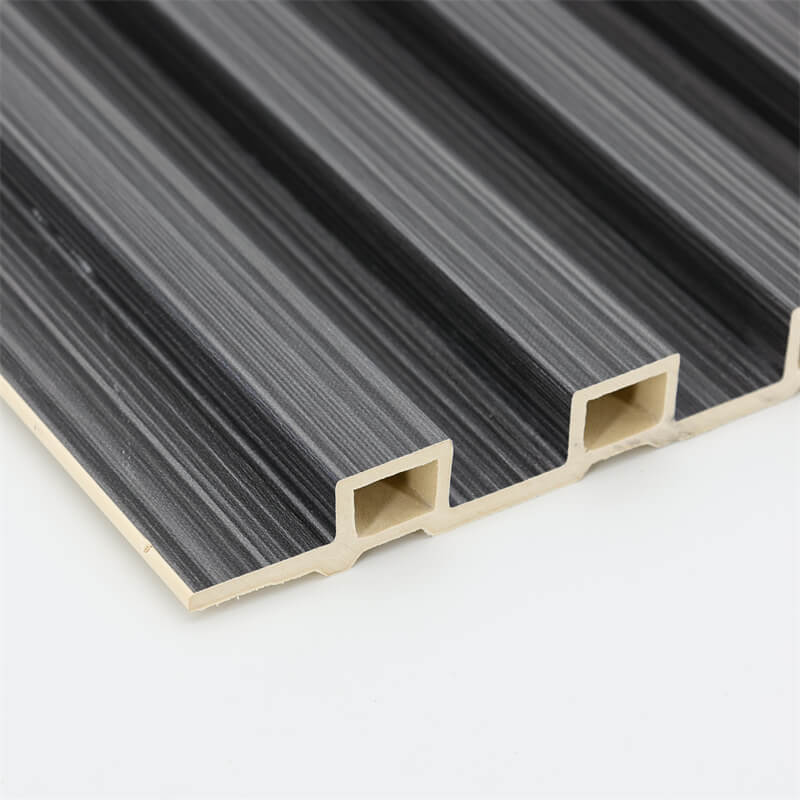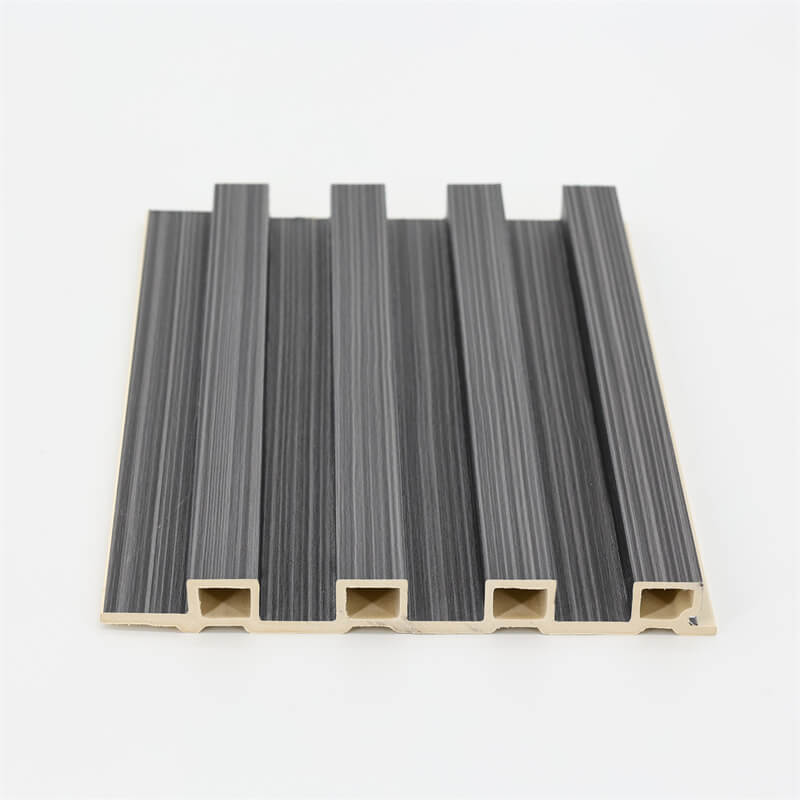
Sustainable architecture and construction practices have gained significant importance in recent years as we strive to create a greener and more eco-friendly built environment.
WPC wood slat panels have emerged as a smart choice for architects, designers, and builders who prioritize sustainability without compromising on aesthetics or performance.
Made from a blend of wood fibers and recycled plastic, these panels offer a range of benefits, including durability, versatility, and environmental friendliness.
This article explores the advantages and applications of WPC wood slat panels in sustainable architecture and construction, along with key considerations when selecting manufacturers and suppliers.
I. Understanding WPC Wood Slat Panels
WPC, or Wood Plastic Composite, is a material that combines the natural beauty of wood with the durability and weather resistance of plastic.
WPC wood slat panels are created by blending wood fibers or flour with plastic, typically high-density polyethylene (HDPE), and other additives.
This composition results in a product that mimics the appearance of wood while offering enhanced strength, longevity, and sustainability.
Benefits of WPC Wood Slat Panels for Sustainable Architecture and Construction
WPC wood slat panels offer several advantages over traditional building materials, making them an attractive choice for sustainable architecture and construction:
These panels are made from a combination of recycled materials, reducing the demand for virgin wood and minimizing waste.
By choosing WPC panels, architects and builders contribute to the conservation of natural resources and the reduction of environmental impact.
WPC panels are highly resistant to moisture, rot, and pests, ensuring their longevity and reducing the need for frequent replacements.
Their durable nature translates into fewer materials ending up in landfills over time.
WPC wood slat panels require minimal maintenance compared to traditional wood materials.
They do not require staining, painting, or sealing, saving both time and resources in the long run.
These panels can be used in various applications, including cladding, decking, fencing, and interior paneling.
Their versatility allows architects and designers to incorporate them into different sustainable building projects, enhancing the overall aesthetic appeal.
Applications of WPC Wood Slat Panels in Sustainable Architecture and Construction
WPC wood slat panels find widespread applications in sustainable architecture and construction, offering both functional and aesthetic benefits:
The durability, weather resistance, and natural appearance of WPC panels make them an excellent choice for exterior cladding.
They provide insulation, protect the building envelope, and contribute to the overall energy efficiency of the structure.
WPC panels are ideal for decking and landscaping applications.
Their slip-resistant surface, resistance to moisture, and UV stability make them a durable and eco-friendly alternative to traditional decking materials.
WPC wood slat panels can be used for interior wall paneling, ceiling treatments, and decorative elements.
Their warm and natural aesthetics create a visually pleasing and sustainable interior environment.

II. Choosing Manufacturers and Suppliers
Selecting reliable manufacturers and suppliers is crucial when considering WPC wood slat panels for sustainable architecture and construction projects.
Here are key factors to consider:
Product Quality: Choose manufacturers that produce high-quality WPC panels.
Look for certifications or accreditations that validate their adherence to industry standards.
Assess the quality of the materials used and the manufacturing processes employed to ensure consistency and durability.
Range of Options: Opt for manufacturers or suppliers that offer a wide range of panel sizes, profiles, and finishes.
This allows architects and builders to find the most suitable options for their specific design requirements, ensuring flexibility and creative freedom.
Pricing and Value: While price is an important consideration, it should not be the sole determinant.
Evaluate the overall value offered by the manufacturer, considering factors such as product quality, warranty, customer service, and post-purchase support.
Manufacturing Processes and Sustainability: Look for manufacturers that prioritize sustainable manufacturing practices.
Consider whether they follow environmentally friendly processes, such as using renewable energy sources or recycling waste materials.
Choosing a manufacturer with a commitment to sustainability aligns with the goals of sustainable architecture and construction.
III. Cost Considerations and Budgeting
The cost of WPC wood slat panels can vary depending on factors such as panel size, design complexity, and quantity required.
While it is important to consider the budget, it is equally crucial to assess the long-term benefits and savings associated with these panels.
Obtaining Quotes: Request detailed quotes from multiple suppliers or manufacturers.
Compare the cost per panel, additional charges, and shipping fees to make an informed decision based on your budget.
Long-Term Cost Analysis: Although WPC panels may have a higher upfront cost compared to some traditional materials, their durability and low maintenance requirements can result in long-term cost savings.
Consider the overall lifecycle cost when evaluating different options.

IV. Maintenance and Care of WPC Wood Slat Panels
Proper maintenance ensures the longevity and aesthetics of WPC wood slat panels in sustainable architecture and construction projects.
While these panels require minimal upkeep, the following steps can help maintain their appearance:
Use mild soap, water, and a soft brush to remove dirt, dust, or stains from the panels. Avoid using abrasive cleaners or tools that may damage the surface.
Periodically inspect the panels for any signs of wear, damage, or loose fasteners. Address any issues promptly to maintain the integrity and visual appeal of the structure.
Dispose of any waste or old panels responsibly, following recycling or waste management guidelines. Consider repurposing or recycling WPC panels at the end of their lifecycle to minimize environmental impact.
WPC wood slat panels offer a smart and sustainable choice for architects, designers, and builders in the realm of sustainable architecture and construction.
Their environmental friendliness, durability, low maintenance requirements, and versatility make them an attractive alternative to traditional building materials.
When selecting manufacturers and suppliers, consider factors such as product quality, range of options, pricing, and sustainability practices.
By incorporating WPC wood slat panels into sustainable projects, we can contribute to a greener and more eco-friendly built environment while enjoying the aesthetic and functional benefits they offer.
